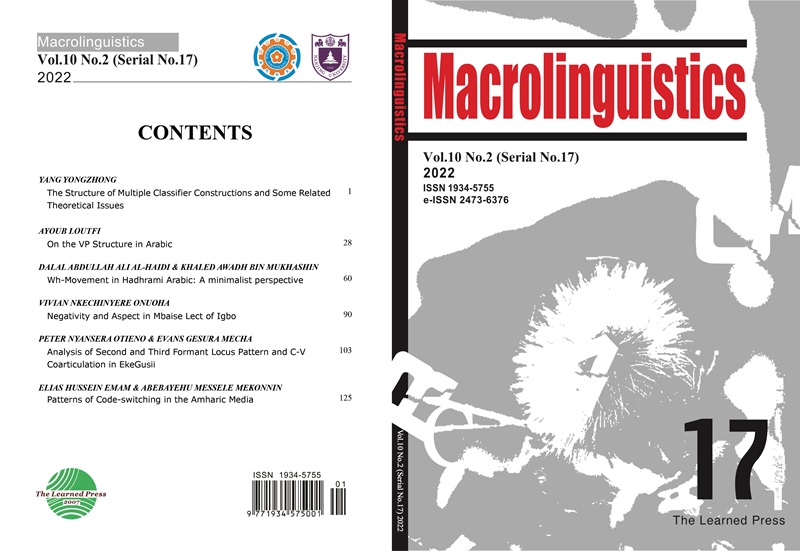The Acquisition Phenomenon of Null and Overt Subjects in the Early Speech of Arabic-Speaking Children
引用次数: 0
Abstract
This paper examines the early acquisition of null subjects and overt subjects and how they are distributed and realized in the early speech of Arabic dialect-speaking children. The study accounts for the phenomenon of subjects by examining a longitudinal corpus of two children, Wala and Ibraheem, who were around two years old, speaking Yemeni Ibbi Arabic (YIA) dialect. The production and elicited production data collection methods were used in the study to collect the corpus during five months. The results of the study showed that null-subjects appear with a high proportion compared to the overt subjects. It was found that null subjects and overt subjects in the speech of Ibraheem and Wala had a similar distribution in the imperfective and the perfective, of which 86-87% are null subjects and 12-14% are overt subjects. The paper examined the widespread linguistic phenomenon of Null Subject Parameter acquisition, (Rizzi, 1982; Hyams, 1986, 1989) that is emergence of null subjects in line with overt subjects. The paper supports Hyam’s (1982) argument on the acquisition of Null Subject Parameter where we can find children acquire null subjects early around 2 years of age. In contrast to non-null subject languages (like English), Null Subject Languages (NSLs) like Arabic happen to have null subjects appear more frequently and this is due to the rich inflectional morphology of NSLs.阿拉伯语儿童早期言语中隐性和显性主词的习得现象
本文研究了阿拉伯语方言儿童早期习得的空主语和显性主语,以及它们在早期言语中的分布和实现。这项研究通过检查两个孩子的纵向语料库来解释受试者的现象,这两个孩子大约两岁,说也门伊比阿拉伯语(YIA)方言。本研究采用生产和引出生产数据收集方法,在五个月内收集语料库。研究结果表明,与显性受试者相比,无效受试者的出现比例很高。研究发现,在Ibraheem和Wala的言语中,无效主体和显性主体在不完全体和完成体中的分布相似,其中86-87%为无效主体,12-14%为显性主体。本文考察了普遍存在的零主语参数习得的语言学现象(Rizzi,1982;Hyams,19861989),即零主语与显性主语的出现。本文支持Hyam(1982)关于零主体参数获取的论点,我们可以发现儿童在2岁左右就获得了零主体。与英语等非零主语语言相比,阿拉伯语等零主语语言的零主语出现频率更高,这是由于其丰富的屈折形态。
本文章由计算机程序翻译,如有差异,请以英文原文为准。
求助全文
约1分钟内获得全文
求助全文
来源期刊
自引率
0.00%
发文量
83
审稿时长
20 weeks
期刊介绍:
Macrolinguistics (ISSN 1934-5755, e-ISSN 2473-6376) is an international academic journal which is specialized in research papers of non-Indo-European linguistics. It is published biannually by The Learned Press and funded by the Double First-Class Initiative of Nanjing University. It aims at contributing to the complementarity and interaction of linguistic research worldwide.

 求助内容:
求助内容: 应助结果提醒方式:
应助结果提醒方式:


